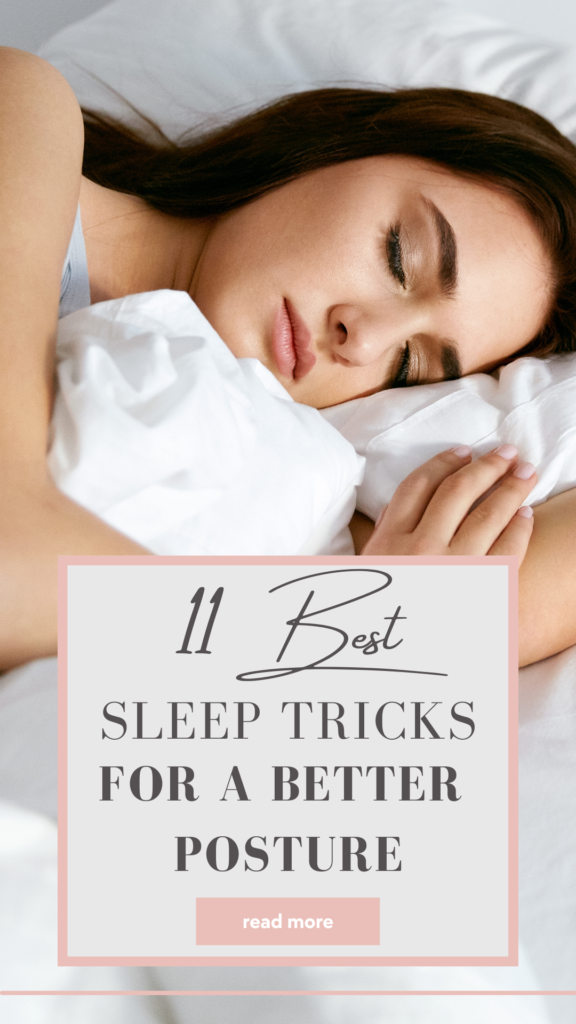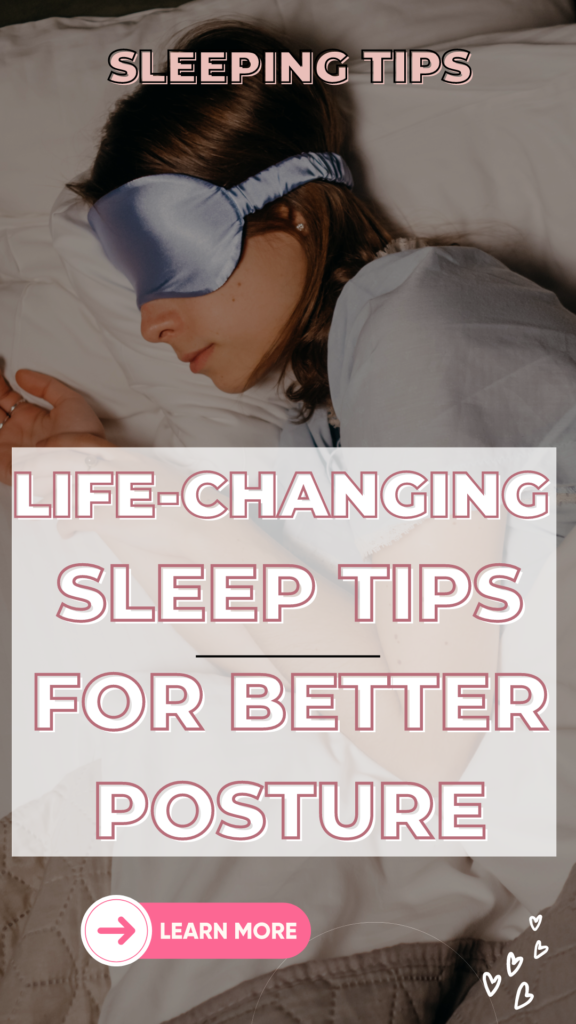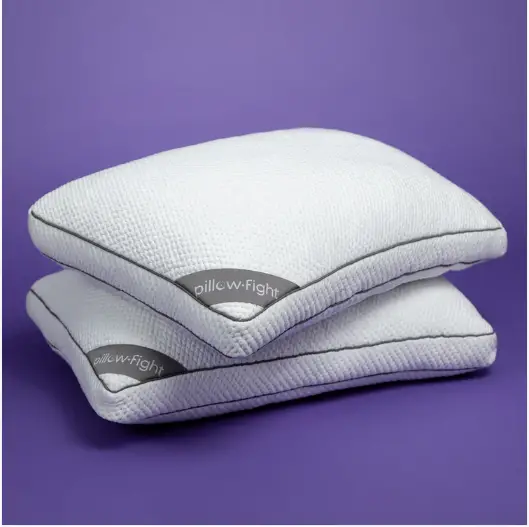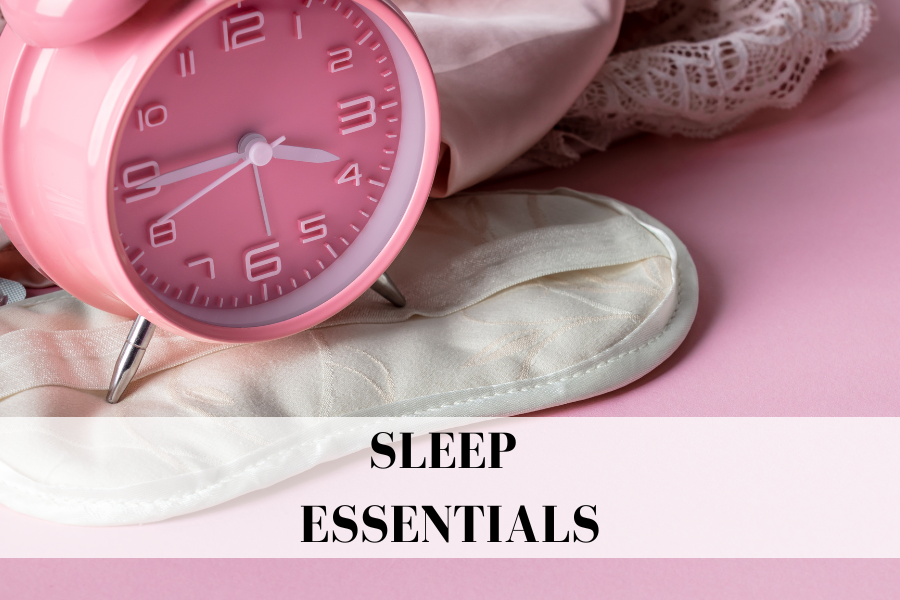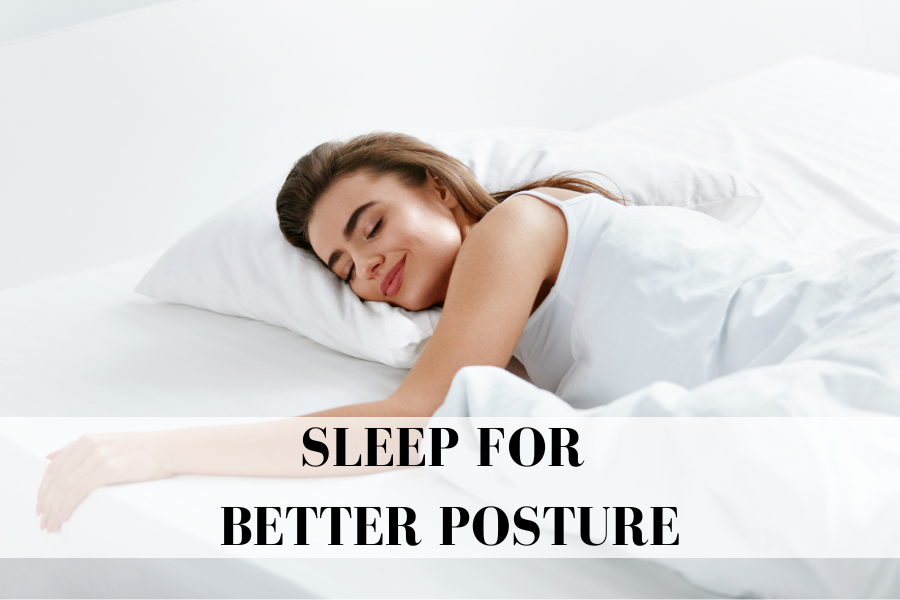
11 Sleeping Tricks For a Better Posture in 2023
Good sleep habits are essential for good posture and energy levels. Fortunately, giving yourself the gift of a better sleep position is simple and easy to achieve. From adjusting your bedding to changing positions throughout the night, here are 11 tips to help you improve your sleeping posture in the new year.
So let’s get into those tips for a better sleep posture!
*This post may contain affiliate links, which means I may receive a small commission, at no cost to you, if you make a purchase through a link!*
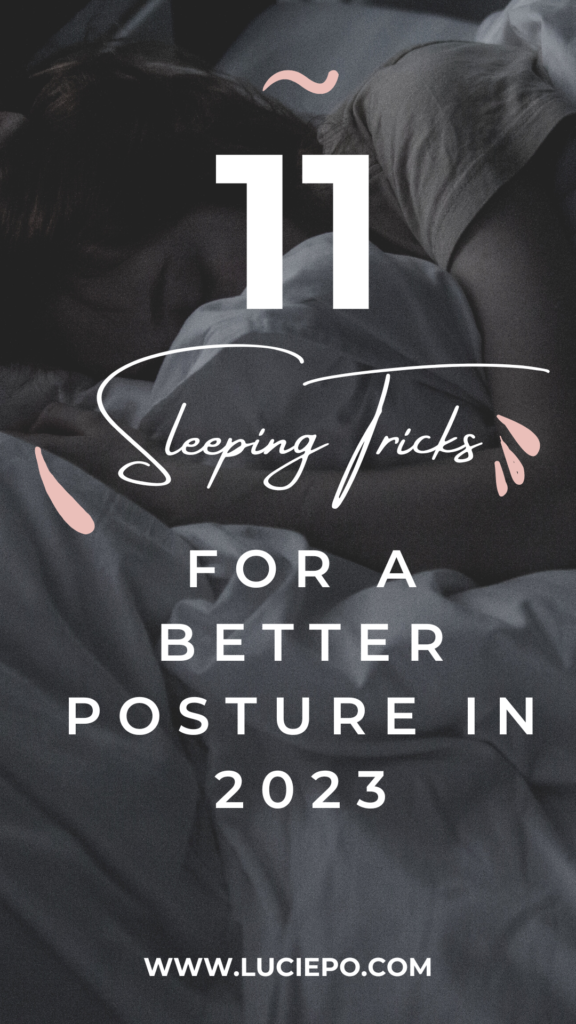
11 Sleeping Tricks For a Better Posture in 2023
1. Invest in a supportive, comfortable mattress and pillow
Taking care of your body starts with a good night’s sleep. A supportive, comfortable mattress and pillow are essential for good posture and energy levels. Invest in quality bedding that fits the contours of your body and will keep you in a neutral position while you sleep. Be sure to rotate and flip your mattress regularly to ensure even wear and tear.
2. The ideal height and firmness of mattress
It is important to have the proper height and firmness of a mattress to sleep in the correct posture. There should be enough support for the back and shoulders, so avoid mattresses that are too soft or too low, as this can lead to poor ergonomics. Make sure your mattress is firm enough to provide adequate support while still being comfortable. If you’re not sure if your mattress is right for you, try sleeping on different ones at a store and see how they feel.
Check my Guide on How To Choose The Right Mattress on my Instagram account HERE.
3. Sleep on your back to promote stabilization of the spine
Sleeping on your back is one of the most beneficial positions for maintaining optimal spinal alignment and promoting a good posture. This will help reduce strain on joints, bones, and muscles. Be sure to use a cushion or lumbar roll behind your lower back if it is not naturally supported when you are on your back. To further support yourself, place a pillow beneath your knees for extra cushioning.
4. Place pillows between your knees for extra cushioning and support
Placing a pillow between your knees will help keep your body in alignment while you sleep and additional cushioning will reduce pressure on the hips and lower back. When sleeping on your side, make sure to place a pillow next to your belly as this will help support your stomach and spine. Additionally, having one pillow under your neck while lying down also aides in avoiding neck cramping.

5. Avoid sleeping on your stomach, as it can restrict breathing and cause neck strain
Unless you have a specific condition that requires you to sleep on your stomach, try to avoid this position as it causes your spine to be curved in an unnatural angle. This can lead to neck strain, back aches and even pinched nerves. Instead, try sleeping on your side or back with the help of supportive pillows that prop your body into alignment.
6. Check Your Posture While Sitting, Standing, and Lying Down
Checking your posture throughout the day can help you adjust any bad habits, boosting your long-term health and helping improve sleeping posture. When sitting or standing, make sure to keep a straight back, as well as engaging your core muscles. A good trick is to imagine that there is a string attached to the top of your head, gently pulling it upwards. Lying down should also be done in proper form – if you’re sleeping on your back, try placing a pillow underneath your knees for support. For those who sleep on their sides , positioning a pillow between the legs can help realign the body and relieve tension.
7. Sleep on your side with one leg bent, and your other leg straight
This position is a great way to maintain posture while sleeping that helps reduce the strain from lying on your back. It’s best to choose the side you favour and bend your top leg to a slightly smaller angle than 90 degrees so that you’re not straining your spine in any direction. Keeping this leg slightly bent creates neutral alignment with your hips, shoulders, neck, and head in one straight line. Although it takes some practice to find this comfortable pose, the results of better sleep quality and improved posture can be worth it once you achieve it!
8. Stretch before bedtime to release tension in your muscles and joints, improving comfort while you sleep
Give yourself some time (at least 10 minutes) before bed to stretch out your major muscle groups. Take slow and deep breaths in between each stretch, focusing on relaxing your mind and body to help prepare for sleep. Stretching will not only release any tension from your day but it can also help improve the alignment of your spine while you sleep, reducing stiffness and aches in the morning.
9. Exercise Regularly to Increase Flexibility
While sleeping can help, it’s important to exercise regularly to increase flexibility and strengthen your postural muscles. Regular exercise helps keep posture in check, improving the quality of sleep and helping reduce pain caused by bad posture. Focus on activities like pilates and yoga, which focus on proper form and technique to build core strength, which is essential for good posture.
10. Avoiding twisting positions while sleeping
To ensure your posture is not affected while you are sleeping, consciously avoid twisting positions like tucking your knees towards the chest or crossing your legs at the ankles and knees. These motions can cause compression in the spine that increases risk of discomfort or pain as you wake up. While lying on your side is still beneficial if possible, be sure to stay straight with either arm resting comfortably by your side instead of grabbing a pillow in between your arms and curling into a fetal position.
11. Incorporate relaxation techniques like yoga or meditation before bed to help ease tension in your body and promote better posture
Relaxation techniques can be a helpful way to prepare your body for a comfortable and supportive sleeping position. When tension builds up in the body, it’s more difficult to retain a good posture while asleep. Allowing yourself time before bed to stretch or practice yoga can help activate the parasympathetic nervous system, which will reduce stress levels and make it easier to lie in a comfortable position as you drift off to sleep.
This blog post was all about Sleeping Tricks for a Better Posture
Poor sleeping habits and postures can lead to back pain, neck pain, and other chronic issues. The good news is that you can improve your posture through better sleep habits and positions. I hope these tips on how to get the perfect night’s sleep for better posture in 2023 were helpful for you!
You might also like:
9 Essential Steps to Rebrand your bedroom (Bedroom tips for better sleep) – Lucie Po
4 Reasons why sleep is important for a healthy life – Lucie Po
10 Best Calming Books to Read before Sleep – Lucie Po
Like it? Share it on Pinterest!
